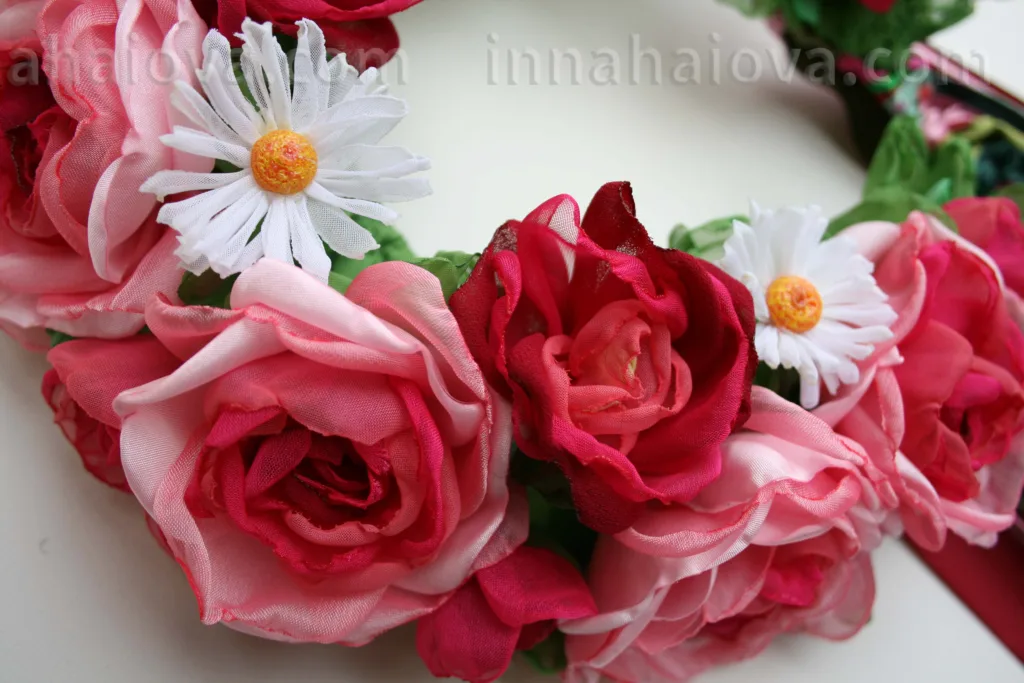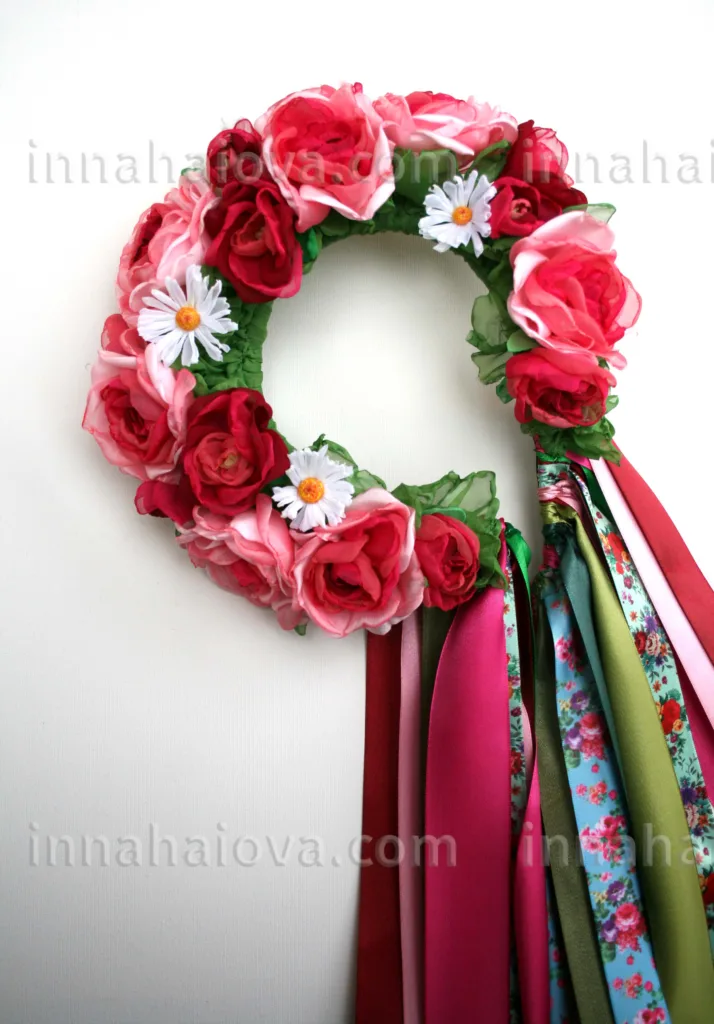Floral Wreath
The flower crown was created based on the Ukrainian folk costume and can be used as a supplement to a modern ethnic style attire
A head wreath (a chaplet) is one of the most ancient elements, carrying beauty and filled with deep primordial symbols. Its round shape is a sign of integrity, continuity and harmony, which is probably why the Ukrainian wreath is the embodiment of purity and the idea of procreation. Additional semantics are given to the flower crown by the special properties of the plants from which it is woven, and the effect of weaving as such. Each flower, ribbon, spikelet, according to the tradition, personifies the spiritual qualities of the owner or is a wish for good and prosperity.
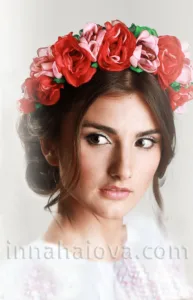
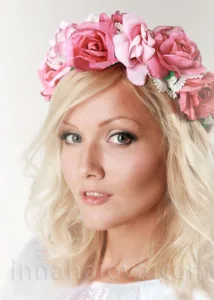
Of course, in different regions of Ukraine, the traditions of weaving wreaths had their own inherent traits, but the facts that have survived to this day allow us to highlight the most characteristic features of wreaths that were found in many regions.



Historically, the Ukrainian flower crown, in addition to flowers, was always decorated with ribbons that ended just below the girl’s braids to hide them from the evil eye. A light brown ribbon in a wreath was a symbol of the earth, yellow one – the sun, green – beauty and youth, blue – a symbol of sky and water, giving strength, orange – a symbol of bread, purple – wisdom, magenta- sincerity, pink – well-being and abundance. White ribbons were tied to a wreath only when they were embroidered: one with the sun, the other with the moon.
In Ukrainian culture, a wreath is a girl’s headdress worn by young girls and young unmarried women. It was a favorite decoration and could tell a lot about the female soul, reflecting the events of her life, hopes and intentions.
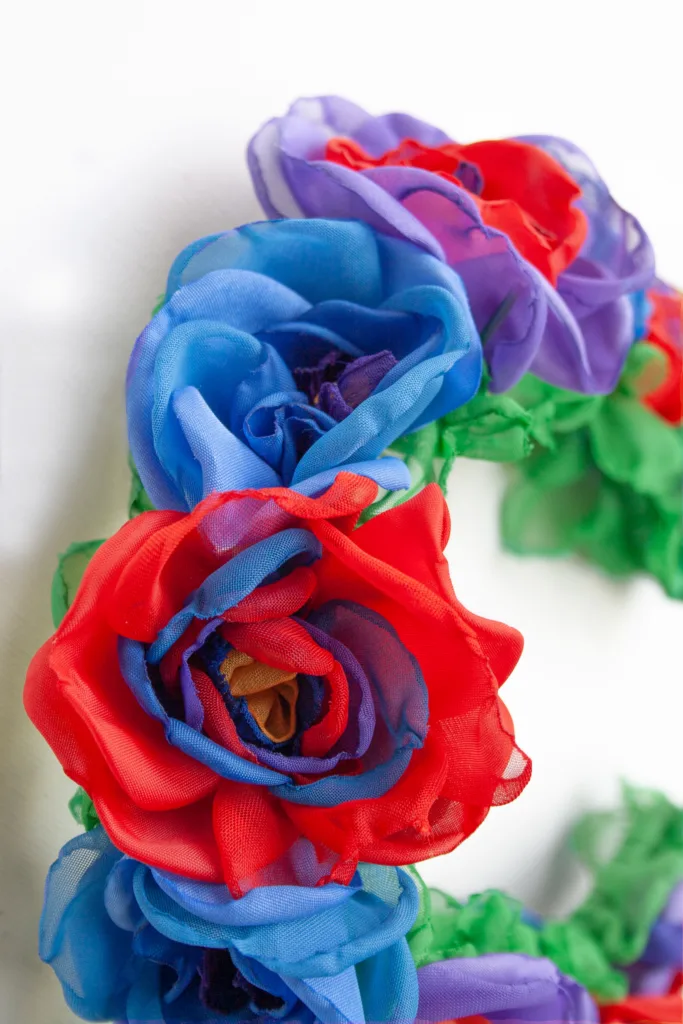
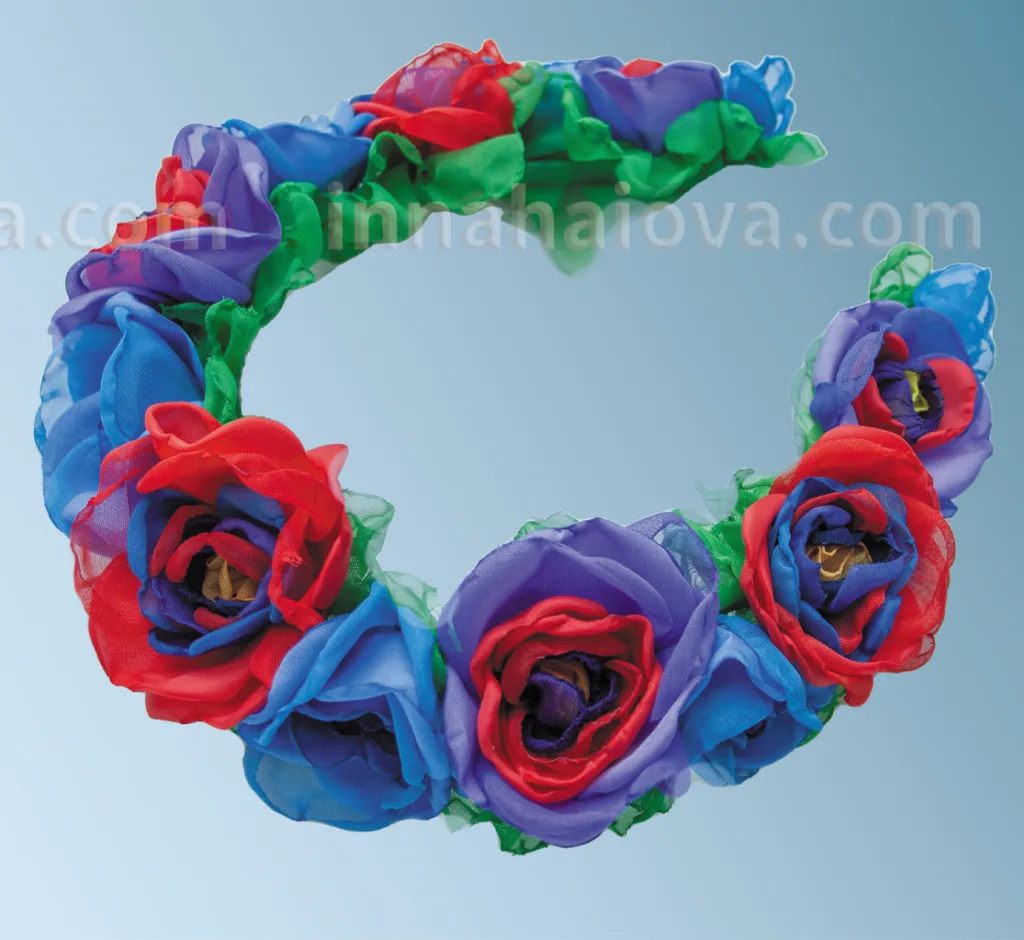
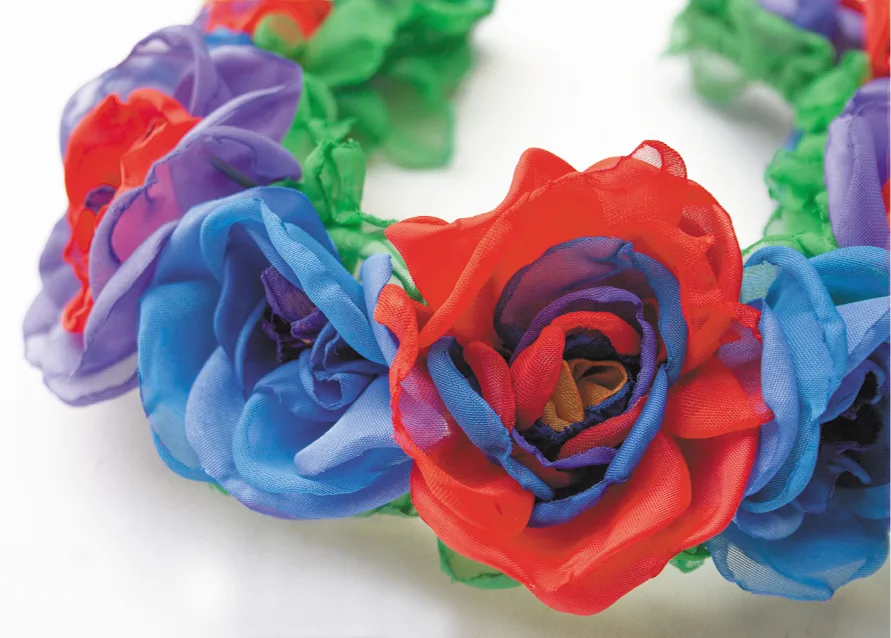
When the girl was three years old, her mother wove her the first wreath of herbs and delicate wildflowers. Each plant in the head wreath had healthful properties and was a talisman. At the age of six, bright cornflowers were added – a symbol of youth and health, and poppies – to strengthen the mind and for restful sleep.
With the age of the girl, the gamma became richer and more colorful. Starting from the age of 13, each of her wreaths already carried a certain message to the world, expressing the state and aspirations of the girl.



Wreath of Love
It symbolized maidenly beauty. The chamomile flower, which was part of this wreath, combined the symbolism of purity with the symbolism of a strong family. Among the chamomiles apple or cherry tree flowers were woven, and above the forehead – a bunch of red viburnum.
Wreath of Hope
When the girl was unlucky in love, she wove a flower crown of poppies and cornflowers. Sometimes such a wreath was given to a timid boy as a confession.
Wreath of Devotion
It was weaved from cornflowers and lovage. The cossack took it with him for his jorney, knowing for sure that he was loved and awaited at home.
There was also a wreath of break-up, made from flowers of primrose – a symbol of ephemerality, and heather – a symbol of hopelessness and loneliness, which the girl gave to her beloved one while breaking up with him.
Ukrainian wedding wreath
A wedding wreath was the brightest and the most significant. It is usually woven from roses – a symbol of beauty and love, with addition of other flowers and plants.
The wedding wreath, except for its protective and symbolic function, was a real work of art. It took from a few days to a month to make it, depending on the size and complexity of the implementation.
Today we are witnessing a resurgence of interest in this wonderful tradition. Many famous designers draw inspiration from the original national costume and colorful Ukrainian wreath. This bright and stylish accessory can often be seen both at traditional lush holidays and at ultra-modern youth gatherings.
This is very valuable for us, because today, in the rapid vortex of events and changes, it gives us the energy of goodness and beauty, reminding us of femininity, the unity of natural origins and the mystery of life.


